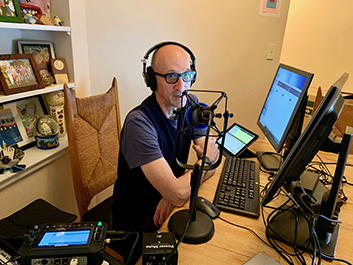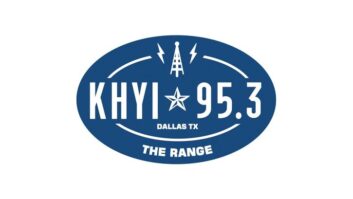Steve Shultis is chief technology officer of New York Public Radio. He answered questions in May from Editor in Chief Paul McLane in connection with RW’s ebook “Broadcasting From Home Around the Globe.”
N.Y. Public Radio is the home of WNYC(AM/FM), WQXR(FM), The Gothamist, WNYC Studios and the Jerome L. Greene Performance Space.
Radio World: How is your organization’s broadcasting workflow today different that it was before coronavirus?
Steve Shultis: Everything has changed: Approximately 98% of our entire staff is working from home, including talent. The only staff coming into the office on a regular basis are a minimal body of broadcast engineers and broadcast maintenance engineers, facility engineers and some office support staff. All other work groups, including reporters, show producers (including podcast and digital-only stream production), call screeners, membership and development staff, marketing, digital developers, sponsorship, etc. are working and producing from home.

Credit: Wayne Shulmister
By far the greatest concern for us was to protect the health and safety of our staff: For anyone whom we still require to come into the office/studios, we segregated this staff into three teams such that no one crossed paths with each other; and we perform cleaning between team changeovers.
To form these teams, we scaled back operations, eliminating attended overnights and used that staff, as well as our performance space and remote concert technical staff, to form a skeleton screw for master control operations and anything else that we still needed to perform at the facility.
RW: What technologies are used to enable your new workflows for the major portions of the on-air product?
Shultis: We immediately moved from a running POC of Teradici Zero Client PCoIP — a remote access platform designed for media — to purchased, permanent infrastructure to allow remote access for our newsroom production team for the WFH effort. We had been exploring it prior to the pandemic for general mobility needs for the newsroom reporters/producers so we were positioned to put it into production relatively quickly.
Additionally, Broadcast Bionics offered us an emergency installation of their AudioServer virtual phone PBX and Bionics Studio call screening system, which we migrated to from our legacy, physical PBX/phone hybrids and Bionics PhoneBox call screening system in an effort to move call screeners to their homes.
To complete the installation we had to engineer a new QSIG connection from our separate Business SIP PBX and steal some surplus DIDs from that SIP provider and engineer an AES67 connection to the new Bionics server for use in virtual sound cards and hybrids.
We designed and built 18 home studios based around Comrex NX codecs, remote access and the Bionics call screening system; and our engineers delivered installed and tested each of them in the talents’ homes. We are currently doing a live on-air fund drive with all of these in use daily.
For our many teams producing shows from home, we are leveraging our enterprise Dropbox infrastructure for sharing audio files between production team members, and worked closely with Avid for providing remote licensing for our many Pro Tools production workstations to allow individuals to work on remote laptops.
Lastly, we are working closely with our console manufacturer SAS, building a soft console and soft switching for full remote control of our audio infrastructure mixing and routing, should we be forced to evacuate the broadcast facility. We are using this now for emergency operations from home during unattended operations.
RW: What was the biggest technical management challenge you had to meet in the first days or weeks of the coronavirus?
Shultis: Early on, we were informed by our newsroom that they had reason to believe that the virus was already present in New York City and strongly recommended that we close our doors to any outside entities — guest talent, sales people, etc. — to protect our staff. We took the recommendation to heart and from that time on performed all live and taped interviews remotely and cancelled all of our many upcoming shows in our public performance space.
These were hard calls to make in the early stages of the pandemic, when many venues and entities around us were still open and doing business as normal.
RW: Was there a particular solution or application that you think your peers would be interested in?
Shultis: Teradici or their competitor VMWare Horizon might be interesting for those wishing to remote into media infrastructure.
RW: How will radio operations for our industry be permanently changed in the long term?
Shultis: There will be many permanent changes to the broadcast industry workplace and workflows.
We are currently running an on-air fund drive with multiple hosts collaborating live on air from their home studios and taking physical cues using Zoom video conferencing in lieu of traditional face-to-face, in-studio collaboration. This workflow for live interviews will be the norm so as to minimize exposure to staff, i.e. leveraging phone and IP technologies for both audio and video feeds.
It will be interesting to see what transpires with “live” music broadcasts; will they be limited to only the smallest of ensembles to fit on a stage with social distancing rules — or will it be relegated to something like Zoom meetings with the musicians performing live but in separate locations …?
We have a densely populated office and newsroom and have enjoyed the ease of collaboration and social interaction this open workspace has afforded us. Now this appears to be a liability, and we will have to rethink what our office and studios look like and function. We are engaging our architect for the effort and have created an internal task force to work with them and our various teams to devise both a physical and personnel scheduling plan that is safe and productive for our staff.
RW: Anything else we should know?
Shultis: I would advise our industry peers to make sure they have PPE at shared transmitter sites. Early on we learned of an individual associated with a general contractor who works extensively for a master antenna site that had to quarantine due to exposure. That drove home the point for us that we had to make sure we had PPE to use at the sites when working with or around other entities.







